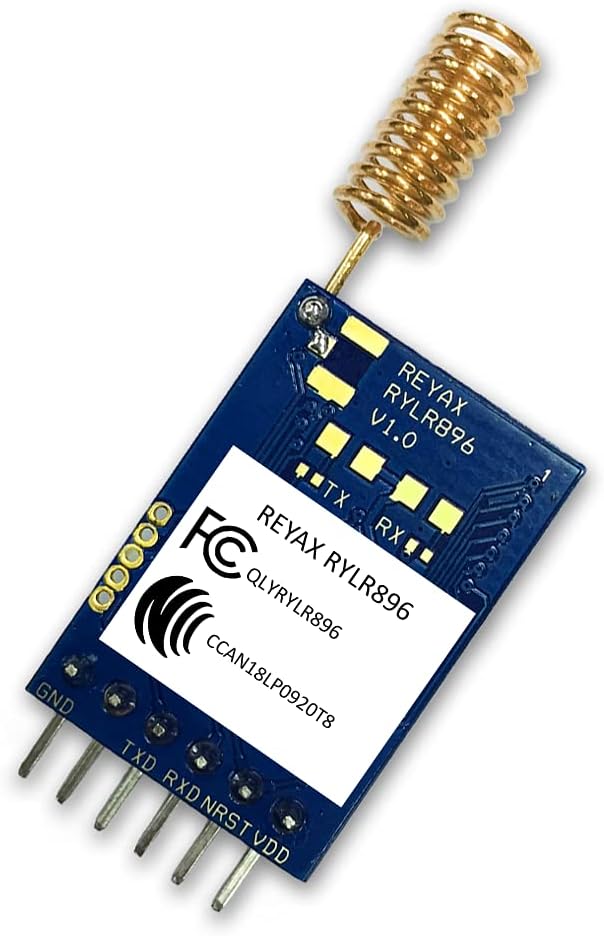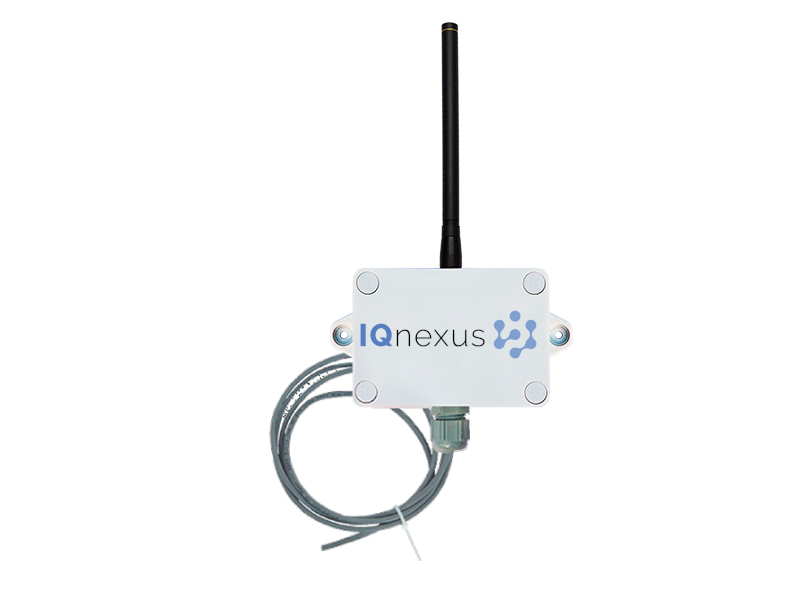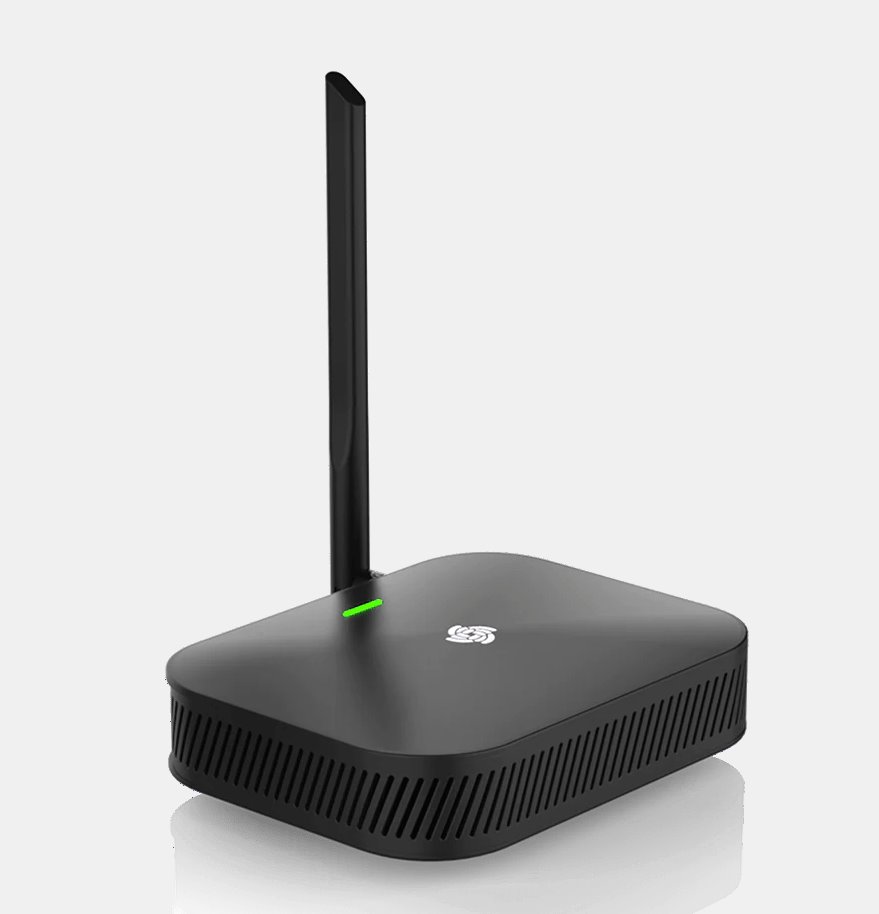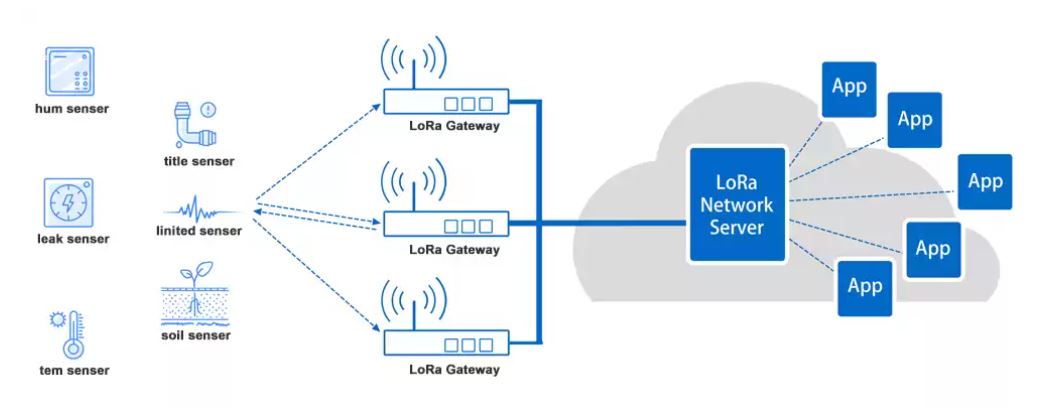LORA
Long range
LORA stands for Long Range. In their simplest form, they are tiny transceivers that communicate with each other in short data burstsThink of LoRa as a long-range text-only walkie-talkie that can reach really far distances. It's a technology that allows devices to communicate with each other over relatively long distances considering how small they are.
LORA is not designed to establish voice communications. However, it is excellent in transmitting data messages at a low bit rate over large distances, which is why it is very widely used in IoT (internet of things) applications.
- A LORA connection can be established:
- between 2 LORA transceiver
- between 1 LORA transceiver and a sensor (which has its own LORA transceiver built-in)
- between multiple LORA sensors and 1 LORA transceiver

A LORA transceiver
Use example
If you have a sensor (temperature, humidity, ON/OFF, etc) located 3km away on a hill top, it cansend its data using the LORA RF signal to the LORA receiver for monitoring, storage or processing.
Because LORA is bi-directional, messages can also be send to the IoT end devices (commands) to turn lights ON/OFF, increase/decrease water flow, etc.. examples and scenarios are practically limitless.
The above merits however don't come for free. The fact that it only communicates at low data rate makes it not adequate for voice communication.
LORAWAN
This is a communication network protocol based on LORA and more suited for big application and industry. It offers lots of advantages such as:- Managing registration and authentication of end devices and other network components
- Managing the routes data take and determines which sensor is allowed to talk with which gateway
- Encrypting and decrypting messages for security and privacy
- Data rate adaptation based on signal quality
- A typical LORAWAN infrastructure consists of:
- LORAWAN-compliant end devices
- Gateway(s)receive/send data from the end devices
- Network server receive/send data from/to the gateways
- Application server (also used as the user interface)
LORAWAN example
A dairy products factory needs to permanently control the temperature, pressure, humidity and vibration of its production line, cold storage rooms and various machines.Hundreds of sensors could be installed on the points to monitor, a gateway that relays the sensors data to the network server, then the latter sends all these data to an application server where an operator can monitor

A LORAWAN Sensor
Courtesy of www.iqnexus.com
A LORAWAN Gateway
Courtesy of www.iotthinks.com
A LORAWAN architecture
Courtesy of www.nicerf.comLORAWAN dataflow
The network server receives encrypted data from the gateway(s), decrypts and processes it according to the LoRaWAN protocol, and then forwards the relevant data to the application server.Sensor > Gateway > Network server > Application server (for telemetry)
Application server > Network server > Gateway > Sensor (for telecommand)
Each component of a LORAWAN network plays a role in the encryption, rate adaptation, verefication of data integrity and processing.
Features, pros and cons
- Operates at 915MHz, 868MHz and 433MHz (depends on your country's regulations)
- Long range (2-10km depending on obstacles)
- Very low power consumption
- Highly resistant to interference
- Very scalable and adapts to growth
- Secure (when using the LORAWAN protocol)
- Low data rate
- License-free
Users and use cases
- Smart cities: Monitoring traffic, pollution, and energy usage
- Agriculture: Tracking livestock, monitoring crops, and managing irrigation
- Logistics: Tracking shipments and assets
- Environmental monitoring: Measuring temperature, humidity, and other environmental factors
- Governments for city management and public safety
- Farmers for improving crop yields and reducing waste
- Companies for supply chain management and asset tracking
- Researchers for environmental monitoring and scientific studies
Resources:
- https://lora-alliance.org
- https://www.thethingsindustries.com
- https://en.wikipedia.org/wiki/LoRa
- https://lora-alliance.org
- https://www.thethingsindustries.com
- https://en.wikipedia.org/wiki/LoRa